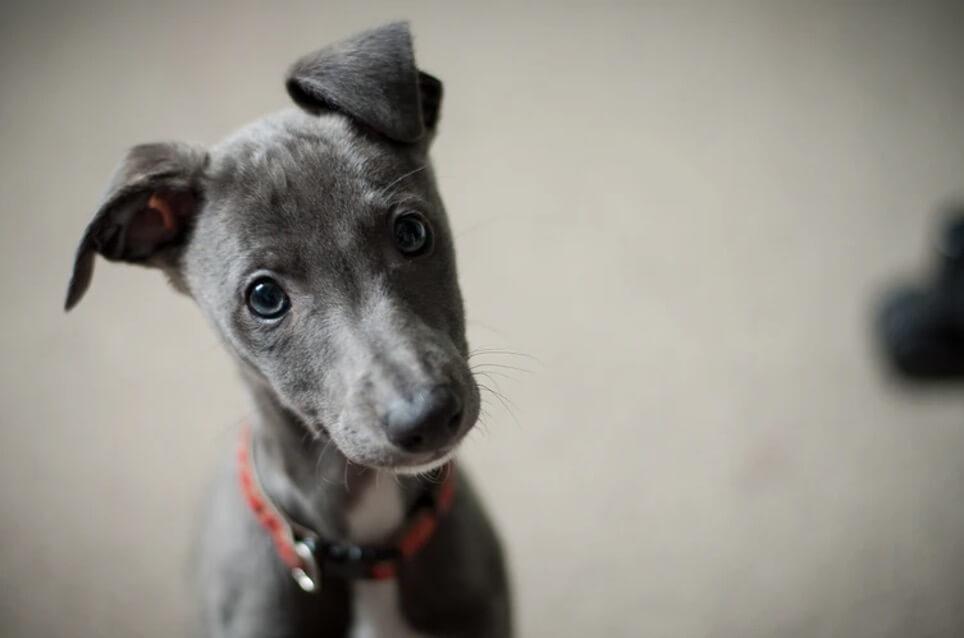In this blog, we learn the best ways to potty train a puppy – the obvious first step! We’ll discover the importance of routine, patience and how to prevent the likelihood of regression.
5 Helpful Tips To Potty Train Your New Puppy

Best Ways To Potty Train A Puppy
Congratulations! You are now a pet parent and what a journey you’re about to have with your new furry friend…
So, you’ve brought your puppy home and house training seems the obvious first step. It can be relatively simple as long as you remain clear, kind, willing, and calm.
Luckily, dogs naturally want to go to the toilet away from their own living area, so as long as they know where you’d like them to go to the toilet, they usually follow suit pretty quickly!
It’s recommended that you begin dog toilet training between 12-16 weeks old. If you’ve adopted your puppy older than this age, they may take a little longer to forget the habits established at the breeder’s home, so stay patient with them if this is the case.
Establishing Routine
Routine is the first and foremost essential step for successful dog toilet training. Puppies, like human babies, have very poor control over their bladder, so they need to urinate much more frequently than an older dog.
Puppies need to go to the toilet as soon as they wake up in the morning, so you need to get them straight outside if you don’t want an unwelcome sunrise surprise! Puppies typically urinate within 15 minutes of eating – and poop within half an hour of eating! So, making sure they’re near the designated toilet area after mealtimes is important.
Whilst they’re urinating or pooping, make sure you repeat the cue word you’re going to use throughout their life to encourage them to go, so they start associating the word with what they’re doing. If you feel uncomfortable using literal cues like “poo-poo” or “wee-wee”, you can use alternatives like, “make”, “hurry up” or “busy busy”.
Puppies also urinate when they get excited, so make sure to take your pup out as often as possible if they’ve been active, exploring, or playing. Try to avoid playing with them until they’ve been to the toilet, so you don’t distract them from the task at hand – your pup will struggle to concentrate on two things at once. After all, they’re only a baby.
Letting them roam without a lead is great if you’re in an enclosed, safe garden… but if this is impossible, make sure to invest in an extendable lead so they don’t feel too restricted when relieving themselves.
Always be present with your pup when they are going to the toilet, so you can praise and reward them straight away. This will encourage them, and eventually, help them to repeat this good practice and behavior. If you’re not there, your puppy might focus on getting back to you, rather than going to the toilet. Plus, if you’re away from them during this vital training time, you may miss the opportunity to praise them and treat them if they do go, leaving you unable to reinforce the desired habit.
Accept that accidents will happen

It’s unfair to expect your new pup to not to have an accident whilst they’re learning. It typically takes 4-6 months for a pup to become fully house trained, and even a mature dog can sometimes find themselves in trouble later in life! Remember, puppies have very small bladders and are easily distracted, just like children!
Punishing them for going in the house, although instinctive, is actually counterproductive. It will only frighten them and can potentially make them fearful of going to the toilet in front of you – quite the opposite of what we want our beloved dogs to feel!
Lots of sites on the internet advise you to rub your pooch’s nose in their wrongly placed mess or be cruel to them whilst pointing at the mess – DO NOT DO THIS. This type of reaction is confusing, damaging, and unkind. They are intellectually unable to connect your anger with the accident, they will just learn to be scared of you.
If you catch them doing their business in the house, calmly move them outside and praise them when they finish in the right place. If you discover an accident after it’s happened, just calmly clean it up and focus back on establishing a good routine. When cleaning up any mess, use an enzymatic cleaner instead of one that’s ammonia-based, otherwise, you run the risk of your dog being attracted back to the same spot.
It’s unfair to expect your puppy to go through the whole night without needing the toilet when they are very young. Leave puppy training pads or newspapers down away from their bed area until their bladder is stronger… Or be prepared to come downstairs to a little mess!
The signs your pup needs to go…
As your puppy begins to learn they shouldn’t poop or pee in the house, they’ll start communicating to you they need to go. Here are the signs to look out for:
- Scratching at the door
- Barking at the door
- Circling
- Sniffing
- General barking
If you spot any of the signs, take them out straight away! If they go, praise them for letting you know. They’ll then learn to repeat this form of communication to you – making your life a lot easier, and less messy!
Training whilst out walking
Many pet parents report that their young pup won’t go to the toilet whilst walking, but will go as soon as they’re home. This is completely normal! Your pup has learned that it’s meant to go home, in the garden or yard, so is habitually holding their wee in to please you.
To encourage them to go to the toilet whilst on a walk, try getting up very early and getting them on their stroll before their morning wee! Desperation should hopefully encourage them to go, so praise them lots if they do whilst out. This might take a few goes, so if unsuccessful the first few times, get them straight to their usual spot as soon as you’re home!
Training whilst you’re out

When you first begin your dog toilet training, it’s best not to leave your puppy alone if you can – at least until training is well established. If you do have to go out without them, leave them in the area of the house they are most comfortable with and make sure they’ve exercised and have been to the toilet before you leave. Put out puppy training pads or newspapers away from their bed area just in case they really need to go whilst you’re gone.
You shouldn’t leave a puppy alone for longer than 2 hours and adult dogs shouldn’t be left for longer than 4-6 hours. If you need to leave them for longer than this, consider hiring a friendly dog sitter to help you care for your precious pooch.
Puppy Potty Training Regression
If your puppy does have an accident, refocus on your routine and training, making sure to praise them when they get it right. Puppy potty training regression can happen because of many reasons: you thinking they’re trained and have gotten lazy with their routine, moving house, over-feeding, poor routine, changing environment, leaving them alone for too long or there may be a medical reason for their lack of progress. If you suspect the latter, check-in with their vet.
Consistency and patience are key when it comes to successful dog toilet training, so keep at it and your hard work will pay off!
 S
S



